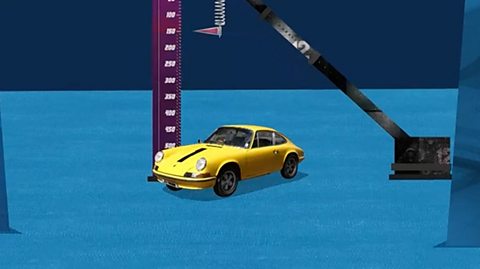What are the key learning points about pressure?
Pressure is a force exerted per m2, the unit of pressure is the pascal (Pa), where 1 Pa = 1 N/m2.
The equation P = F ÷ A is used to calculate pressure.
When using a sharp knife, the small area of the blade creates a large pressure, making cutting easier.
Having caterpillar tracks on vehicles means their weight acts over a large area, so reducing the pressure they exert on the ground.
What is pressure?
Pressure is the effect of a force over an area.
It is the force acting over 1 m2.
Therefore, the definition of pressure is: pressure is the force per unit area.
If a force acts over a larger area, then the pressure will be smaller.
If the same force acts over a smaller area, then the pressure will be larger.
Exam Tip
You should never refer to the area as the “surface area” as this would include the whole outer surface of the object not just the area in contact.
You should just use simply area or contact area.
When answering descriptive questions about pressure, you must talk about the force that is acting and the area over which it acts.
You then state whether this combination leads to a larger or smaller pressure.
What is the equation for calculating pressure?
\(Pressure~P=\frac{\text{Force F}}{\text{Area A}}\)
\(P=\frac{\text{F}}{\text{A}}\)
Where:
P = pressure in pascals Pa
F = force in N
A = area in m2
| \(P =\frac{\text{F}}{\text{A}}\) | \(P = F \div A\) |
| \(F = PA\) | \(F = P \times A\) |
| \(A =\frac{\text{F}}{\text{p}}\) | \(A = F \div P\) |
What is a unit of pressure known as?
The unit of pressure is N/m2 or pascal, Pa.
1 N/m2 = 1 Pa
For smaller areas, the units N/cm2 and N/mm2 are also used for pressure.
Pressure is only in pascals, Pa, when the force is in N and the area is in m2.
A pressure of 50 Pa means that a force of 50 N acts over an area of 1 m2.
When the units of force are newtons (N) and the units of area are square metres (m2), then the units of pressure are N/m2, which are commonly called pascals (Pa).
In calculations, the units for pressure may be in N/cm2 or even N/mm2.
Use the units that the question provides – you will not be expected to convert mm2 or cm2 to m2.
Question
Calculate the pressure exerted by a paving slab of weight 250 N if the area of contact with the ground is 1.25 m2.
P = \(\frac{\text{F}}{\text{A}}\)
F = 250 N
A = 1.25 m2
P = \(\frac{\text{250 N}}{\text{1.25 m}^{2}}\)
P = 200 Pa
The pressure exerted by the paving slab is 200 Pa.
Why is pressure important?
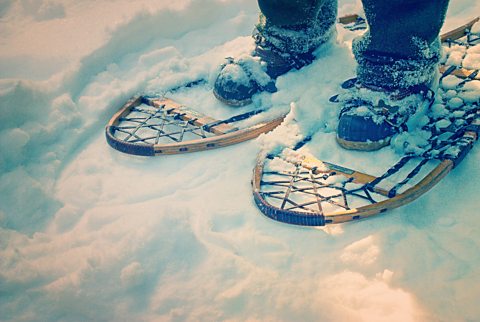
Pressure is important in a range of everyday situations.
Different styles of shoe can cause different pressures due to their area.
Flat shoes spread the force over a large area, reducing the pressure. Snow shoes have a much larger area than feet to spread the force over a larger area and reduce the pressure on the snow, this stops people sinking into the snow.
High heeled shoes or boots transfer the force through a much smaller area, causing a much greater pressure. It will hurt more if a person steps on someone’s foot in high heels than if they are wearing flat shoes.
When using a sharp knife, the small area of the blade creates a large pressure, making cutting easier.
Having caterpillar tracks on vehicles means their weight acts over a large area. This reduces the pressure they exert and are less likely to sink in to wet ground.

Question
A metal box is 60 cm long, 20 cm wide and 50 cm tall.
It has a mass of 30 kg.
Find the maximum pressure which the box can exert on the top of a table.
Answer
The maximum pressure will occur when the face with minimum area is in contact with the table.
The face with minimum area has dimensions 20 cm by 50 cm.
Area = 20 cm x 50 cm.
A = 1 000 cm2.
Force on the bench = weight of the box = mg.
Force = 30 kg x 10 N/kg.
Force F = 300 N.
P = \(\frac{\text{F}}{\text{A}}\)
P = \(\frac{\text{300 N}}{\text{1000 cm}^{2}}\)
P = 0.3 N/cm2
The maximum pressure exerted by the box is 0.3 N/cm2.
Question
A girl standing on one foot exerts a pressure of 6 N/cm2 on the ground.
If the area of her foot is 75 cm2, calculate the downward force.
Answer
F = PA.
P = 6 N/cm2
A = 75 cm2
P = 6 N/cm2 x 75 cm2
P = 450 N.
The downward force exerted by the girl is 450 N
Can you identify the different types of pressure?
Test your knowledge
More on Unit 1: Forces
Find out more by working through a topic
- count5 of 5
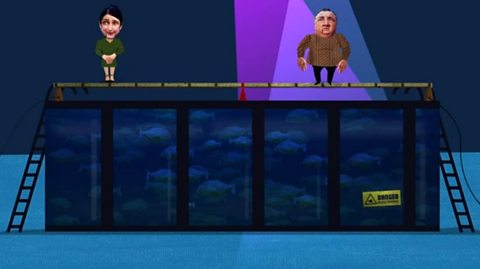
- count1 of 5
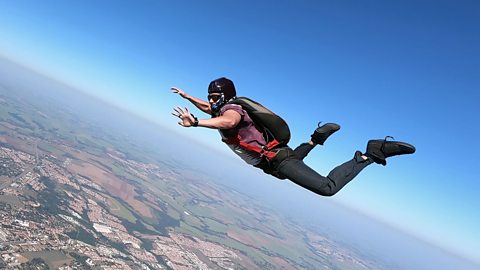
- count2 of 5
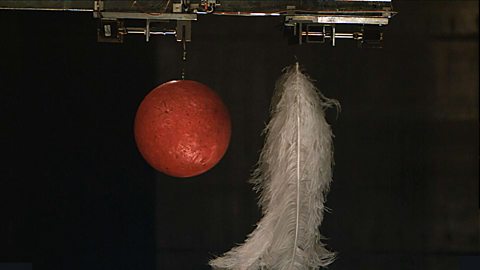
- count3 of 5
